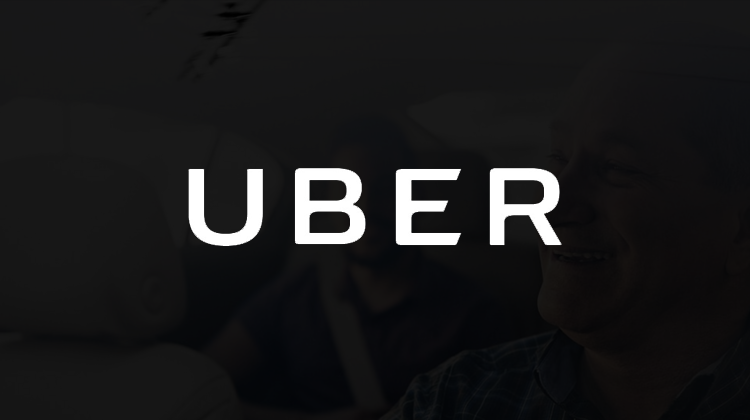优步(UBER.US)2025年第一季度业绩电话会
文章语言:
简
繁
EN
Share
Minutes
原文
会议摘要
Uber discusses enhancing consumer experiences through AI and tech partnerships, addressing market dynamics, and reporting strong financial performance with plans for further growth and profitability.
会议速览
The Uber Q1 2025 earnings conference call introduces financial updates, featuring remarks from the CEO and CFO, and outlines both GAAP and non-GAAP financial measures.
Despite a challenging economic backdrop, Uber reports record Q1 growth in active consumers, engagement, gross bookings, and adjusted EBITDA. Strategic partnerships with Waymo, Opentable, Delta, and trendy Algo highlight a focus on expansion and profitability, setting expectations for continued strong performance in Q2 and beyond.
The speaker discusses the elasticity of mobility pricing, noting that transactions decrease for every dollar increase in price. They also highlight positive developments in autonomous vehicle (AV) utilization in Austin, with high vehicle utilization rates and plans for expansion in Atlanta and other markets.
An analyst inquires about the evolving competitive landscape, pricing dynamics, and strategies for balancing supply and demand in the mobility and delivery sectors, highlighting specific geographic areas of intense competition.
The markets for mobility and delivery services remain highly competitive globally, with intense domestic and international rivalry focusing on service, quality, and expansion. Despite challenges like insurance issues and market consolidation, the speaker's company holds a leading position in most markets and sees significant growth in grocery and retail businesses, emphasizing the need for continuous innovation and adaptation.
Uber discusses plans to grow its autonomous vehicle fleet in Austin to over 100 vehicles, emphasizing safety, customer experience, and high utilization. The focus is on providing exceptional service to drive growth and attract more users, with less than 20% of adults currently using the platform regularly.
The company has experienced 19% year-over-year trip growth for the past three quarters, driven by audience expansion. Despite higher international trips with lower gross bookings per trip, the company achieved all-time high margins due to reduced insurance costs, particularly in the U.S. Additionally, sparser markets account for about 20% of mobility trips and are growing faster than core markets.
The dialogue discusses Uber's delivery service profit margins, noting significant margin expansion driven by advertising and operational leverage. Grocery and retail delivery have shown potential for further growth and profitability, with a focus on balancing top-line growth and profitability enhancement.
An inquiry discusses overcoming insurance headwinds in the industry and asks for an assessment of which companies, besides Waymo, are closest to rolling out a true autonomous vehicle experience at scale.
As of May 8, 2025, various companies are leading the development and deployment of autonomous vehicle (AV) technology worldwide. WeRide, Pony, and Baidu are operating AVs in challenging urban environments in China, while partnerships with Ma Mobility, VW, and Momenta aim to introduce AVs in Europe. Waymo remains a significant leader, but multiple players are emerging, indicating a competitive and evolving AV market.
The company overestimated insurance increases, expecting high single-digit growth in 2025, lower than previous years. CPI for March showed a 7% year-over-year increase, the lowest in three years. The focus on safety tech innovation, including driver behavior scoring, and policy reforms in states like Georgia, Nevada, and Texas, aim to reduce insurance costs and leverage business growth.
Drivers argue that they are as safe as international counterparts, yet face significantly higher insurance costs due to legal system abuse, contributing to inflation. Policymakers are urged to collaborate to reduce costs and increase driver earnings.
The company observes consistent audience growth and frequency, with no significant impact from macroeconomic factors on mobility rides, pricing, or delivery. Basket sizes continue to increase, indicating no trade-down in restaurant choices despite potential macro uncertainty. The competitive environment in San Francisco and LA remains stable, with the company expressing support for local initiatives to revitalize the market.
The company is committed to steady margin improvement year-over-year, balancing growth investments and profitability. The speaker advises against using recent strong profit expansion in mobility as an indicator for the rest of the year, emphasizing a cautious approach to modeling future performance. Additionally, insights are requested on the AV landscape and the scalability of software-enabled solutions both within and outside the U.S.
The dialogue highlights significant advancements in autonomous vehicle (AV) technology, particularly the shift from heuristic-based systems to large transformer models for improved flexibility and scalability. Partnerships between software developers and Original Equipment Manufacturers (OEMs), such as Waymo and Toyota, signify the industry's direction towards integrating advanced AV platforms in new cars, aiming for level 4 and 5 automation. This trend promises enhanced safety, lower capital costs for vehicle owners, and higher utilization rates. Pure AI-driven approaches by companies in trucking and other sectors are also noted for their rapid development and software generalizability.
The dialogue highlights the focus on affordability in delivery services through membership programs and merchant-funded offers, discussing their impact on growth and customer loyalty. Additionally, it explores the European market's growth, competitive landscape, and views on consolidation within the delivery sector.
The company has achieved the number one category position in the UK organically and sees promising growth in Germany and France, favoring organic expansion over inorganic methods.
An inquiry discusses the potential for partnerships between Uber and large language models to enhance shopping and delivery experiences with local retailers, alongside questions about leveraging opportunities in sparse mobility markets to offset deceleration in urban areas.
The focus is on enhancing customer experience through large language models for improved search and seamless interaction, while strategic expansion into sparse markets promises sustained growth and margins.
The discussion highlights the strong growth in mobility bookings driven by audience growth, with expectations for continued trip growth. Additional focus is placed on the opportunities and dynamics in less dense markets compared to urban centers, emphasizing the role of car ownership and reliability differences.
The company is experiencing rapid growth in lower-cost products, taxi services, and shared rides, with expansion into new geographical and less dense markets. Despite potential headwinds in mobility frequency in suburban areas, pricing and margins are expected to benefit from increased product reliability demands.
The call concludes with gratitude to the Uber team and partners for their hard work, setting the stage for a strong year ahead for the company.
要点回答
Q:How is Uber's multiyear growth framework progressing?
A:Uber's multiyear growth framework is humming, with an audience growth to 29 million monthly active consumers, engagement strength indicated by trips up 20% and retention rates hitting all-time highs globally.
Q:What is the expected outlook for Uber in the second quarter and the rest of the year?
A:Uber expects to deliver strong top line growth combined with even stronger profitability growth in the second quarter, setting a good foundation for the seasonally stronger second half of the year.
Q:What is the elasticity response from consumers to price changes in mobility services?
A:The elasticity response to price changes in mobility services is similar to the past, with a negative impact on transactions for each dollar increase in price, both in the short and long term.
Q:How is the utilization rate of Waymo vehicles in Austin?
A:The utilization rate of Waymo vehicles in Austin is very high, with an average Waymo busier than a typical Uber vehicle in Austin, indicated by the number of trips per day per Waymo.
Q:What are the competitive dynamics in the mobility and delivery sectors?
A:The mobility market is globally competitive with strong domestic and international competitors, while in delivery, the competitive intensity varies with strong competitors in different regions but Uber is positioned as the market leader in most of the markets it operates in.
Q:What factors are driving the growth and consolidation in the US grocery and retail business?
A:The growth and consolidation in the US grocery and retail business are being driven by the company's focus on organic international growth, which has resulted in market consolidation due to the large and competitive nature of the market.
Q:What are the company's priorities for Austin and how does it plan to ensure a perfect ride experience?
A:The company's priority for Austin is to maintain high vehicle utilization and ensure safety and customer experience are not compromised. The focus is on making every single ride a perfect experience, rather than solely on increasing trips. Long-term, the company aims to grow by providing a highly reliable service with exceptional trips, reasonable prices, and predictable ETAs, which is expected to attract more consumers onto their platform and help gain category position.
Q:How is the company's mobility growth performing, and what is the trend in bookings in the US versus international travel?
A:The company's mobility growth has been very strong, with a year-over-year trip growth of about 19%. The conversion from trip growth to GB growth has narrowed, primarily due to lower insurance costs in the US. There's been a slightly higher mix of international trips, which has contributed to lower inbound US travel and reduced gross bookings per trip. However, despite the mix shift, the company has managed to maintain high margins.
Q:What is the growth trend in suburban areas versus urban areas for the company's mobility services?
A:Sparser markets, which are more suburban areas, represent about 20% of the company's mobility trips and are experiencing faster growth than the core urban areas.
Q:How do the profit margins of restaurant delivery compare to those of UberX, and what factors are driving the margin expansion in grocery and retail?
A:The profit margins for restaurant delivery are modestly lower than those for UberX. The margin expansion in grocery and retail is being driven by advertising and the leverage achieved from scale, resulting in cost per trip improvements. The grocery and retail business has reached breakeven variable contribution and is expected to grow further due to advertising and continued improvement in selection. The strong top line growth indicates the earnings power of the delivery business, while the company seeks to balance profitability with top line growth.
Q:Are insurance headwinds a structural industry issue or a manageable problem through structural changes or improvements?
A:Insurance headwinds are seen as not entirely structural to the industry but rather something that can be managed through structural changes or improvements, as suggested by the speaker's view on ongoing leverage against insurance costs and positive adjustments in the marketplace.
Q:Which companies are considered closest competitors to Waymo in developing AV technology?
A:The speaker indicates that it's hard to pinpoint specific competitors due to the early stage of AV development. However, they mention WeRide, Pony, and Baidu as companies with significant AV developments, especially in China, and also note collaborations with Ma Mobility, VW, and Momenta for future AV deployment.
Q:What are the expectations for insurance cost increases in the US mobility business for the remainder of the year?
A:The expectation for US mobility insurance costs for the remainder of the year is a very modest headwind in the high single digits, which is lower than the last two years, thanks to factors like a decrease in insurance inflation and growth in the US mobility business.
Q:How are safety tech innovations impacting insurance costs and consumer insights?
A:Safety tech innovations, such as giving drivers insight into their scoring based on driving behavior, have been deployed across the US and have been positively received by drivers. This is contributing to a favorable insurance cost situation and legal system reforms, which are expected to continue driving down costs over time.
Q:Is there a significant difference in the cost of insurance between the US and international markets?
A:The cost of insurance outside the US is de minimis compared to the US, which plays a huge part in consumer inflation. Local policymakers are encouraged to address this as part of fighting inflation.
Q:What is the current impact of macroeconomic factors on the company's mobility business?
A:The company is closely watching the macroeconomic environment but does not see any significant signals of change as of yet. Consumer categories they operate in tend to remain consistent during macro uncertainty, and there is no indication of changes in consumer behavior or consumer spending power.
Q:What is the competitive environment like in the Bay Area and Southern California?
A:The competitive environment in the Bay Area and Southern California, specifically San Francisco and LA, is described as stable with no significant changes noticed. The company supports local plans for economic revival, which could benefit all competitors in the market.
Q:When do you see software-enabled AV solutions as a viable scale commercial option?
A:The speaker does not provide a specific timeline for when software-enabled AV solutions will become a viable scale commercial option, but the implication is that it's a matter of ongoing evaluation and development within the industry.
Q:What is the company's commitment regarding year-over-year margin improvement?
A:The company is committed to showing steady year-over-year margin improvement.
Q:What recent partnership announcement does the speaker refer to in the context of AV?
A:The speaker refers to the Waymo partnership with Toyota as a recent announcement in the context of AV.
Q:What are the recent trends in delivery affordability efforts?
A:Recent trends in delivery affordability efforts include the growth of the membership program with discounts and the increase in merchant-funded offers.
Q:How is the company performing in Europe and what are its competitive positions?
A:In Europe, the company has achieved number one category position in the UK organically, remains a top market in France, and sees significant promise in Germany.
Q:How does the speaker characterize the potential margin profile for sparse mobility markets compared to urban markets?
A:The speaker suggests that the potential margin profile for sparse mobility markets is not directly compared to urban markets, indicating that it may be different but the specifics are not provided.
Q:What is the company's current focus in terms of merchant relationships and customer experience?
A:The company's current focus is not to push volume from one merchant to another but to improve the customer experience. This involves using larger models for search and understanding consumer context to surface better results and promotions.
Q:How is the company utilizing partnerships with AI companies to enhance its offerings?
A:The company is working with OpenAI and other leading AI companies to build agents that will offer a seamless and delightful Uber experience. These partnerships are in the early experimentation phase, and the focus is on creating consumer experiences that are designed to be optimal, not on merchant concentration.
Q:What is the growth pattern of the company's top 20 cities and how does it plan to extend this growth to other markets?
A:The vast majority of the company's top 20 cities are still growing at double-digit rates. The company sees an opportunity to extend this growth to other markets, especially sparse markets, by investing in them. They have seen great indications of growth in mobility, with 20% of trips now coming from sparse markets and those growing faster than the urban core.
Q:What factors are contributing to the company's trip growth and how is it projected to continue?
A:The company's trip growth is heavily led by audience growth, which is contributing to a narrowing of the delta between trips and gross bookings. The growth is also supported by a strong pricing and mix, with the last three quarters recording strong growth due to 19% year-over-year trip growth. The company expects Q2 to continue in a similar vein, with trip growth being led by audience growth.
Q:How does the company anticipate the expansion into less dense markets affecting mobility bookings and growth?
A:While frequency may be a headwind in less dense markets due to higher car ownership and potential reliability differences, pricing is expected to be a tailwind, especially in terms of reserve trips. In these markets, people are willing to pay a premium for higher reliability. Despite lower frequency, pricing and margins as it relates to product mix are expected to be higher in these less dense markets.

Uber Technologies, Inc.
Follow





